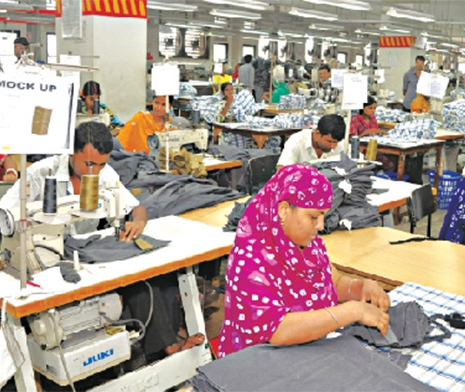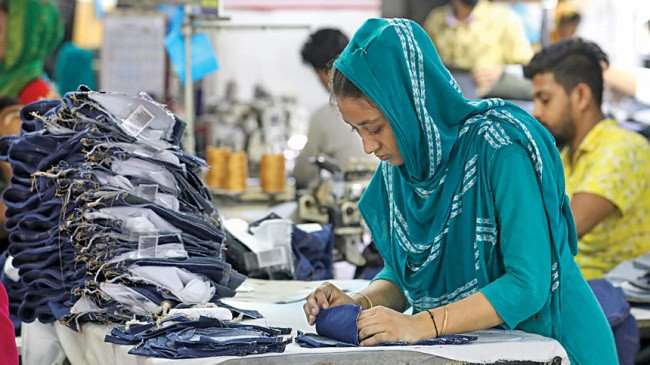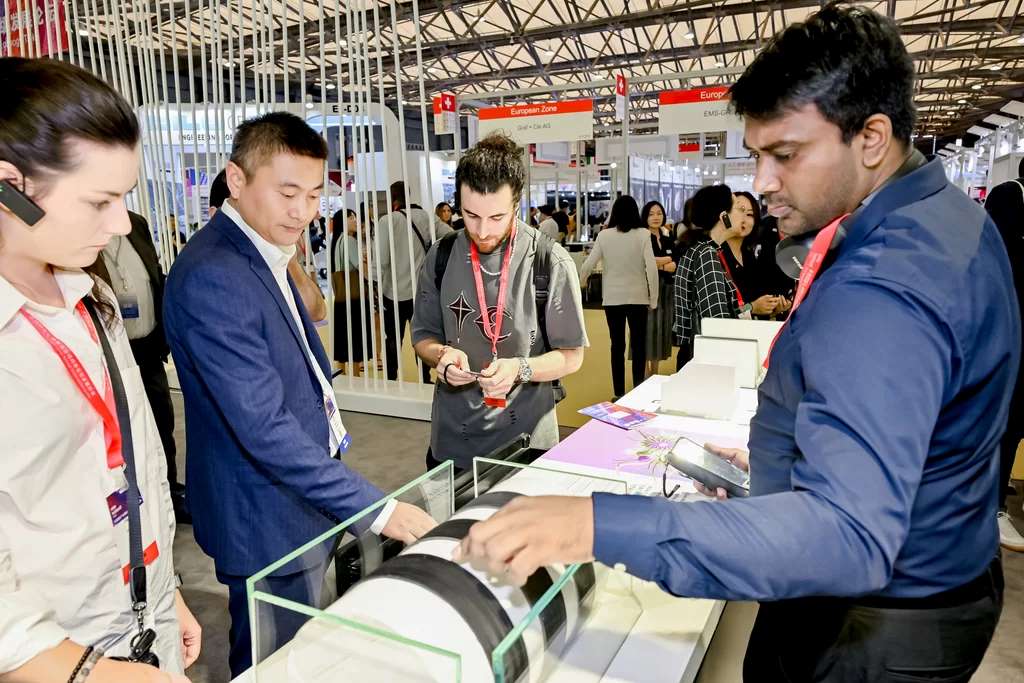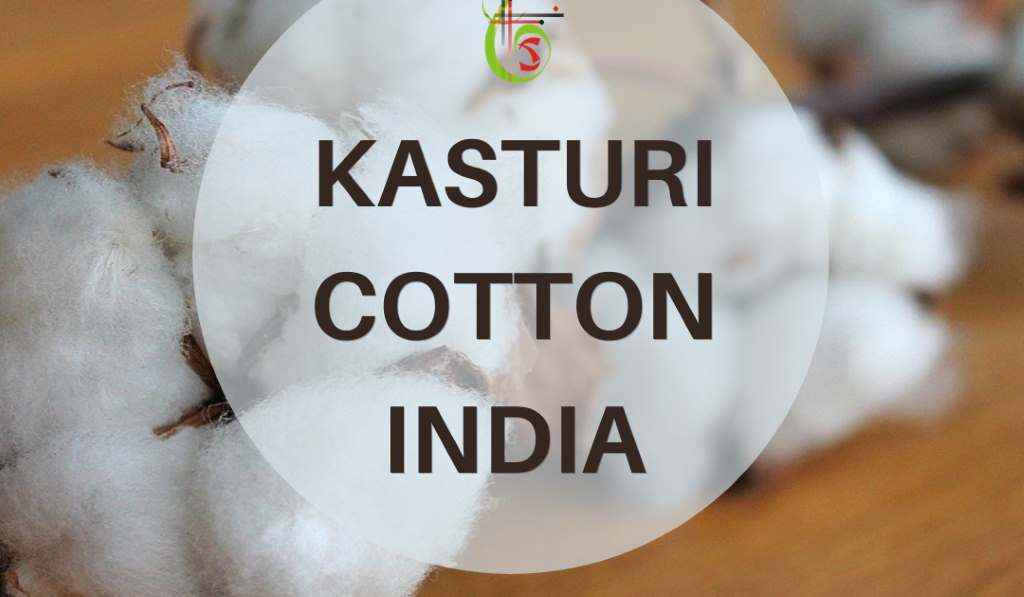FW
The intimate apparel market in China may witness a rise of 17.99 percent between 2014 and 2019 as the consumer shifts from basics to fashion lingerie, according to a recent report by TechNavio.
“Globalization has had a huge impact on the fashion industry in China,” said Faisal Ghaus, Vice President of TechNavio, after releasing the report on China’s intimate apparel market in China. He further added saying, “The young female population is investing significant amounts of time and money to stay up-to-date with the latest fashion trends, which directly impact the intimate-wear market in China.”
The report found that while basic intimate items continue to be popular with Chinese consumers, they are looking for a wider range of offerings, including fashion intimates, thermals and loungewear. “Though consumers will spend on purchasing new types of products, at the same time they will show growing interest for ‘bare necessity’ products as the market is expecting the emergence of new trends with respect to fabric and design,” it added.
It further says that the Chinese domestic market is preparing for fierce competition with increased threat from foreign companies. London-based TechNavio is a research and advisory company that employs about 200 analysts globally and covers more than 500 technologies across 80 countries.
www.technavio.com
With leading western destinations shifting their sourcing to other countries, garment exporters from Bangladesh are moving their shipments to new destinations. Data shows that while the exports to traditional markets saw a decline, shipments to new destinations witnessed a sharp increase.
Apparel exports to new destinations, all markets except the EU, the US and Canada, for instance increased 15.47 per cent year-on-year to $1.87 billion in the first six months from July-December of the current fiscal year, according to Export Promotion Bureau. The major new export destinations that have emerged strong include Australia, Brazil, Chile, China, India, Japan, South Korea, Mexico, Russia, South Africa and Turkey.
During the six-month period, Bangladesh's garment exports to the US declined 5.18 percent, to EU 3.53 percent, and to Canada 14.60 percent. However, garment exports to non-traditional markets were encouraged by the government’s incentive package to businesses during the fiscal year 2008-09. Under the scheme, the government gave 5 per cent cash incentive to garment exporters in fiscal 2009-10, 4 percent in fiscal 2010-11 and 2 percent in fiscal 2011-12. The exporters continue to receive 2 percent cash incentive for exporting to the new destinations.
According to the Export Promotion Bureau, Usually Bangladesh's 60 per cent apparel products are exported to the EU, 23 per cent to the US, 6 percent to Canada and the rest to other countries.
www.epb.gov.bd
Rahul Mehta, the new International Apparel Federation (IAF) and CMAI President global apparel industry is expected to grow 3.5 per cent to over $500 billion this year in line with its performance last year. After a long lull, followed by the economic crisis of 2008, year 2013 saw industry reporting a growth of 3 per cent compared to 2.5 per cent in 2012, which began showing green shoots of recovery.
Mehta feels that developing countries like India where consumption is on the rise may see a growth of 17 per cent and positive signs of US economy will further encourage it, balancing weaker demand from Europe. He further added saying, the global trade dynamics are changing and growth would further be led by a turnaround in Japan, coupled with strong sales in other emerging Asian nations such as Cambodia and Sri Lanka.
Mehta is of the opinion that among all the apparel categories, women's wear leads the pack in Asia with growth of about 22 per cent followed by men's and kids’ wear. However, as far as luxury and sports apparel is concerned, continued financial pressure in the developed world could make a negative impact.
Mehta pointed out that around 60 per cent of garment sourcing happens in Asia, 20 per cent in Latin America and 20 per cent in Europe and by 2020, some of the sourcing may shift to Europe and the US as brands’ showing keenness in close to home sourcing. He feels that overall, sourcing could see a decline to 55 per cent in Asia.
iafnet.eu
The textile industry in Tamil Nadu is in a tizzy with the sudden exorbitant increase in minimum wages for tailors. This is the first pay revision in 10 years. The 64 per cent increase is considered sudden and huge.
The total monthly wages payable to a cutter has shot up to Rs 7,559 from Rs 4,605 and that of a machine operator to Rs 7,409 i[ from Rs 4,514. Stakeholders feel they are not against an increase in basic minimum rate, but a periodical review would have been better than a sudden and steep increase.
The pay revision is applicable to tailoring shops, export garments manufacturing and administrative staff for both tailoring and export garments manufacturing. There are as many as eight scheduled employments under the Minimum Wages Act relating to the textile and clothing sector such as cotton ginning, pressing and waste cotton industry, handloom and weaving industry, handloom silk weaving industry, hosiery manufacturing, powerloom industry, silk twisting industry, tailoring industry and apprentices in textile mills.
Besides these, there are many industrial establishments engaged in the manufacture of knitted and woven garments. However, the Tamil Nadu government has notified minimum wages for hosiery manufacturing. Mills say that if a unit does both, knitted and woven fabrics, and engages the same machine operator, it’s unclear under which schedule of employment it’s to classify these tailors.
To tide over issues, and bring in more clarity, mills suggest bringing minimum wages across the state under one schedule with respect to the textile sector.
Coats, the leading name is industrial thread and consumer textile crafts business, has announced appointment of John Lovell in the newly created role of Group Pensions Director. John will be responsible for overseeing the Coats’ pension schemes worldwide and GPG’s UK pension schemes. Based out of Coats’ head office at Stockley Park in West London, he would commence work from March 2, 2015. He joins from J Sainsbury, where he was assigned the role of Head of Pensions.
The role includes developing the pension strategy for Coats and GPG and working closely with the trustees of the various schemes to ensure its delivery. He will report into Richard Howes, Chief Financial Officer of the company. The principal Coats pension plan is in the UK and GPG also has two UK pension plans. There are also a number of other Coats plans in countries across the world with the US plan.
Before his role at J Sainsbury, Lovell was Director of UK Pensions at Lafarge UK, the building materials company, and UK Pensions Manager at National Grid. He has also worked at Grant Thornton and Pension Development Manager at Italian insurance company, Generali. He started his career at Friends Provident Life Office (now Friends Life).
www.coats.com
The industry in Pakistan is still waiting for the textile policy. Seven months of the current fiscal have already gone by. The policy is being delayed despite the fact that textile exports showed negative growth during the first quarter of the current year. Pakistan’s exporters are chafing at the delay. They are eagerly awaiting cash incentives for their future exports and investments.
Pakistan figures very low in the list of top textile exporting countries because of low value addition. The country’s first five-year textile policy was unveiled in 2009, but there were major constraints in its implementation. The new policy is expected to target doubling of exports and contain various cash incentives, credit subsidies and tax exemptions. About one third of this amount will be allocated for outstanding claims filed by manufacturers and exporters for refunds under the previous textile policy for 2009-14. The balance will be available for initiatives to be undertaken under the new policy. There are a few infrastructure projects, like establishment of garment-weaving cities, ginning institutes etc. under the proposed textile policy as well.
Textile exporters have long been demanding a cut in interest rates to help boost production. However, the interest rate remains high.
Munich Fabric Start for Spring/Summer 2016 season to held from February 2 to 4, 2015, will see over 900 international suppliers from 35 countries presenting their portfolio of 1,500 collections. On display will be the latest developments and innovations in apparel fabrics, dressing, finishing and technology from well-established manufacturers, weavers, printers and textile service providers.
The ‘Fabrics’ segment will feature latest fabric developments and innovations from some 600 suppliers and the Additionals area will showcase latest accessories from about 180 manufacturers. Rounding off the line-up of ranges at the fair will be the comprehensive ‘Colour Forum’ and the ‘Trend Areas’, providing every bit of information and all the components the fashion industry needs for a successful launch into the new season. Nearly 20,000 international trade visitors are expected, including buyers, designers and product managers representing famous brands to source everything they need to design their women’s and men’s collections.
The latest in denim and sportswear developments and finishes will be on display at the Bluezone, a show-in-show at Munich Fabric Start. Titled Denim Extremes, the Spring/Summer 16 Bluzone will feature a line-up of about 80 international denim weavers, finishers and washers. Leading brands such as Candiani, Isko, Orta Anadolu, Tejidos Royo, Calik and Lanifi cio Europa SNC will be joined by Denim Authority, Industrias Morera Unitin, DNM Textile, Fashion Point and Suryalakshmi Cotton Mills.
Paris-based trend and design studio Monsieur-T will present a creative and inspiring think thank on the Blue Stage at the Bluezone to highlight the company’s specialised knowledge of denim trends. Monsieur-T operates internationally as a brand design and market evaluation consultancy and delivers tailored analyses on seasonal design and sourcing trends to renowned brands. The denim art exhibit staged by ‘Nadel & Pen’ will present pure inspiration and creativity tailored, hand-crafted and made in France. Completing the portfolio would be denim-related products such as flats, corduroy, mill-washed fabrics, accessories and the latest innovations for resource-friendly finishes.
The event has put a particular emphasis on textile industry sustainability for years and built a presentation and exchange platform that is unique in both form and scope: the Eco Village and the organic selection presented inside it. The forthcoming show will once again draw well-known NGOs, certification bodies and experts to the Eco Village, where they will present the latest developments and innovations revolving around sustainable textile production and sourcing. GOTS, IVN, IMO, OEKO-TEX, Fair Wear Foundation, Ceres, bluesign technologies and bioRe will be joined by Fairtrade, WRAP and Cotton made in Africa at the dedicated area on sustainability.
In addition to latest developments in fabrics and findings, Munich Fabric Start will offer a comprehensive supporting program consisting of information-packed seminars, trend lectures and eco talks.
Bahrain's textile and apparel sector has got a seven-month respite as the US government has corrected the expiration date of the US-Bahrain free trade agreement tariff preference level (TPL) to July 31, 2016. Earlier the date for expiration was December 31, 2015.
The correction has been made following attention drawn by Bahrain that the expiration date listed as December 31, 2015, for the 10 years’ TPL clause was incorrect as the free trade agreement was not initiated until August 2006. Hence, the 10-year program should be corrected to expire on July 31, 2016.
The US-Bahrain agreement contains the yarn-forward rule of origin, but the rule was suspended for the first ten years of the agreement with the TPL set at 65 million square meters equivalent. This allowed domestic companies to use raw materials imported from third countries for making products meant for exports to the US and avail of the zero-duty benefit.
Once the TPL expires on the corrected date of July 31, 2016, all textile and apparel trade would come under the yarn-forward principle, and garment makers will need to use yarn or fabric made either in the US or Bahrain to avail of the duty-free facility for export to the US.
Japan is planning a big presence at Milano Unica, Italy to be held from February 4 to 6, 2015. Top Japanese makers will be presented at Milano Unica for buyers all over the world. The essence of Japanese fabrics and accessories is underpinned by dual extremities: high-tech and low-tech. The former centers on the ability to develop raw yarns, as exemplified by leading synthetic companies, while the latter comprises skilled traditional craftsmanship; reflected in a long history of expertise and know-how.
Elaborately manufactured compound fabrics also exist thanks to a combination of extremities. The Japanese aesthetic sensibility is present in the fabric creation. Japan will take the opportunity to promote high quality products and further expand business in an effort to kick start textile branding efforts. It hopes to partner with leading like-minded European producers.
It maybe recalled that in September 2014 Milano Unica edition hosted the Japan Observatory initiative. This project was located in a special area within the exhibition ground, where exhibitors representing the country’s manufacturing excellence presented complimentary fabric, rich in innovation, and mainly dedicated to sportswear technology. The Japanese association grouped operators of the textile and apparel sectors, fashion designers and distributors.
Milano Unica is a textile exhibition held in Italy twice a year. It presents top class products of Italian and European textile manufacturers.
www.milanounica.it/ENG/home.php

A recent study suggests that Bangladesh has lost its appeal as a top RMG market for many global brands because of the political unrest in the country. All three South Asian frontier markets: Sri Lanka, Bangladesh and Pakistan, experienced the steepest declines in corporate sentiment, says the latest WSJ/FSG Frontier Market Sentiment Index released.
In 2014, export earnings registered slow growth due to the impact of political uncertainty and two major industrial accidents viz, Tazreen Fashions fire and Rana Plaza building collapse that claimed several lives. In the first six months of 2014 export earnings registered single-digit growth and in the last five months, the figure registered below one per cent growth. Export earnings in January-June period amounted to $14.42 billion, according to the statistics of the Export Promotion Bureau.

In the second half of 2014 the readymade garment sector straggled with shortfall of order due to non- compliance issues as after Rana Plaza tragedy buyers shifted their orders from the factories housed in shared buildings. The export earnings in the July-November period of 2014 grew by only 0.92 per cent to $12.07 billion. Why Bangladesh is losing appeal Interestingly, export data shows the share of RMG has increased in value terms. In 2009 it was $1,192 million which has gone up to $24,583 million in 2014. In per cent terms it has grown from 78.84 per cent in 2009 to 80.85 per cent in 2014. However, growth percentage has been declining in 2009-’10 growth was 24.91 per cent which has gone down to 4.61 per cent in 2013-’14. One major reason affecting the country’s exports is the ongoing political unrest and the opposition party demanding fresh national elections. Other reason is the slow implementation of infrastructure projects and lack of economic reforms.
Top global brands and retailers are seeking alternatives to Bangladesh as the ongoing blockade is hampering timely shipment of garments. Moreover buyers are not willing to travel to Bangladesh to check samples because of possible arson attacks on vehicles, so they are now asking garment makers to send samples to the US. America is the single largest export destination for Bangladesh's garment. In fiscal 2013-14, Bangladesh exported garments worth $5.14 billion to the US, reveal Export Promotion Bureau data.
Almost 11 garment factories have lost $15.1 million between January 14 and January 24 due to the ongoing blockade, says the Bangladesh Garment Manufacturers and Exporters Association (BGMEA). The losses include order cancellation, discount, air shipment charges, delayed shipment and excess transportation costs. In 2013, the sector had to bear air shipment bills worth Tk 5,000 crores and offer discounts worth Tk 9,000 crores because of political unrest. Garment makers or their representatives are forced to travel to Hong Kong, China, India, Thailand and European nations at their own expenditure to attend meetings that were initially planned to take place in Dhaka, leading to further concerns over the country’s inability to emerge as a strong sourcing nation.
According to Rahul Mehta, President International Apparel Federation & C Clothing Manufacturers Association of India, when it comes to Bangladesh, though garments constitute 85 percent of their exports, buyers are putting pressure on Bangladeshi factories to improve wages, labour and safety standards but the question is when standards improve, will Bangladesh be as competitive as today with many buyers already looking at other sourcing options. Ways to deal with the crisis BGMEA in a recent letter to the Ministry of Commerce (MoC) requested the government to allocate closed and loss-making state-owned enterprises (SoEs) to relocate their factories by creating small-sized apparel zones. The industry body seeks SoEs located near the Dhaka-Chittagong Highway for the purpose.
The idea is to move apparel making factories to safer places quickly. Since SoEs have gas and electricity connections, the factories can begin their apparel production immediately after relocation of units. In the letter the BGMEA mentioned that many of the apparel factories have been partly or fully closed because of the ongoing inspection carried out by different local and foreign agencies to check compliance factors.
Experts opine compliance issues and avoiding the possible political uncertainty will be the key challenges the country will have to focus to up its positioning in global readymade garment sector in 2015. The country’s export earnings largely depend on the RMG sector, so they will have to really work towards managing stability in the sector in the New Year.
www.bgmea.com.bd












